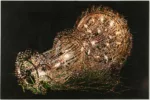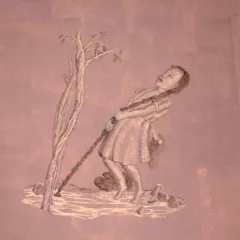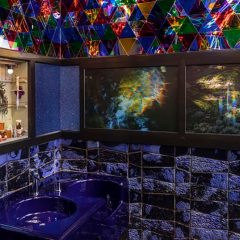If you’re not already familiar with the form, Pastel Portraits: Images of 18th-Century Europe at the Metropolitan Museum of Art (MMA, or The Met, through Aug. 14, 2011) will introduce an under-appreciated medium at its height; and high it was. Popes and royalty chose pastels rather than painted portraits on occasion, as anyone will know who saw the wonderful exhibition of Jean-Étienne Liotard at the Frick Collection in 2006. It included the marvelous pastel portraits that Maria Theresa, Archduchess of Austria, commissioned of her children, including the 7 year old Marie Antoinette (see below), who would marry Louis XV of France. The present exhibition includes one of Liotard’s orientalist figures.
If you’re wondering why would I want to see portraits of people I know nothing about? think about Chuck Close, or a photographer such as Katy Grannan, whose portraits of anonymous street people are on view in the gallery across the hall from the pastels exhibition.
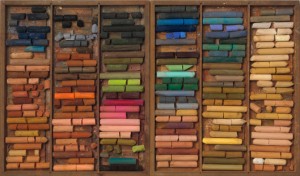
Pastels were overwhelmingly employed for portraiture, and you’ll understand why when you’ve seen the quality they can produce of perfectly powdered skin, as clear and lifelike as the re-touched photographs in Vogue. They were usually done on paper attached to canvas, glazed (covered with glass, for protection), framed, and hung as paintings were; and they were an equivalent size, which sometimes meant using multiple sheets of paper.
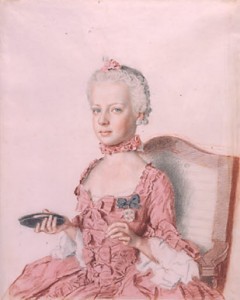
There’s a wonderful introduction to the medium in the form of photographs of the manufacture of pastel crayons, a storage box filled with a range of colors (above, cushioned on beds of bran; that’s an idea for a green packing material) and an example of a support of paper tacked to canvas. There’s also a delightful mahogany painter’s table (c. 1810-20) with storage for both pastels and oil paints (in the bladders which preceded collapsible tubes); its claw feet are on wheels, for ease of movement.
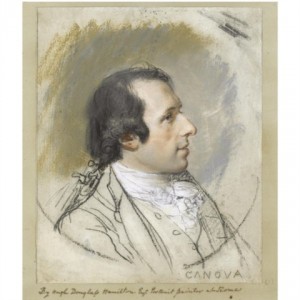
Forty works on view are by French, Italian, English, German, Swiss and American artists. In the case of work by Elizabeth Vigée Lebrun (below) and John Singleton Copley, a short walk through the MMA will allow you to compare their portraits in pastel with their painted portraits. Several pastels by Maurice Quentin de La Tour were purposely not brought to the high finish characteristic of the genre. He used the term préparation to distinguish them, and they give a good idea of the layering involved in the fully-colored and highly finished works typical of18th century pastel technique where the colors were so seamlessly applied that they look almost photographic.
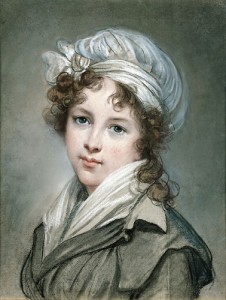
Do save time for the third gallery, which contains my favorites: the portrait of the sculptor, Canova (above), by his friend, Hugh Douglas Hamilton (the only profile portrait in the exhibition; it reminds me of Ingres’ drawings of his artistic cohort in Rome, which were ever so much livelier than his bread-and-butter portraits of English tourists) and Pierre-Paul Prud’hon’s of Nicholas Perchet below), not seamlessly finished but arresting, and the visible indications of its facture appeal to a modernist sensibility. There’s also a fascinating grisaille of a boy reading, by Joseph Wright of Derby, which conveys the quality of artificial light that was Wright of Darby’s specialty.
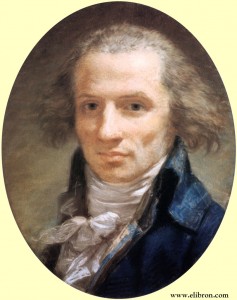
These portraits will expand your idea of the virtuosity possible with pastels and provide a good background for the very different approach to pastels by late 19th Century avant garde artists, such as Degas, Toulouse-Lautrec, and others.



